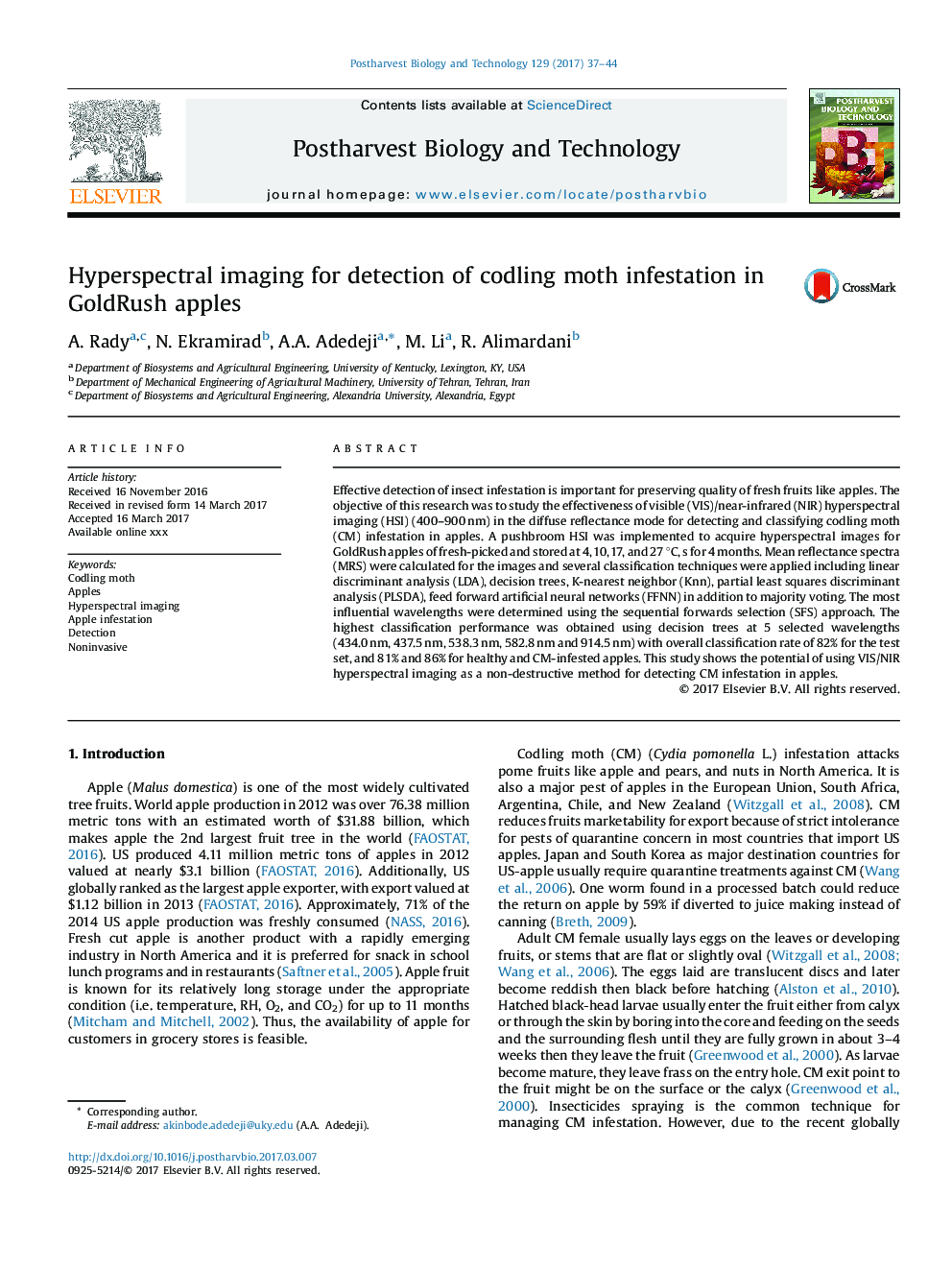| Article ID | Journal | Published Year | Pages | File Type |
|---|---|---|---|---|
| 5762710 | Postharvest Biology and Technology | 2017 | 8 Pages |
Abstract
Effective detection of insect infestation is important for preserving quality of fresh fruits like apples. The objective of this research was to study the effectiveness of visible (VIS)/near-infrared (NIR) hyperspectral imaging (HSI) (400-900 nm) in the diffuse reflectance mode for detecting and classifying codling moth (CM) infestation in apples. A pushbroom HSI was implemented to acquire hyperspectral images for GoldRush apples of fresh-picked and stored at 4, 10, 17, and 27 °C, s for 4 months. Mean reflectance spectra (MRS) were calculated for the images and several classification techniques were applied including linear discriminant analysis (LDA), decision trees, K-nearest neighbor (Knn), partial least squares discriminant analysis (PLSDA), feed forward artificial neural networks (FFNN) in addition to majority voting. The most influential wavelengths were determined using the sequential forwards selection (SFS) approach. The highest classification performance was obtained using decision trees at 5 selected wavelengths (434.0 nm, 437.5 nm, 538.3 nm, 582.8 nm and 914.5 nm) with overall classification rate of 82% for the test set, and 81% and 86% for healthy and CM-infested apples. This study shows the potential of using VIS/NIR hyperspectral imaging as a non-destructive method for detecting CM infestation in apples.
Related Topics
Life Sciences
Agricultural and Biological Sciences
Agronomy and Crop Science
Authors
A. Rady, N. Ekramirad, A.A. Adedeji, M. Li, R. Alimardani,
